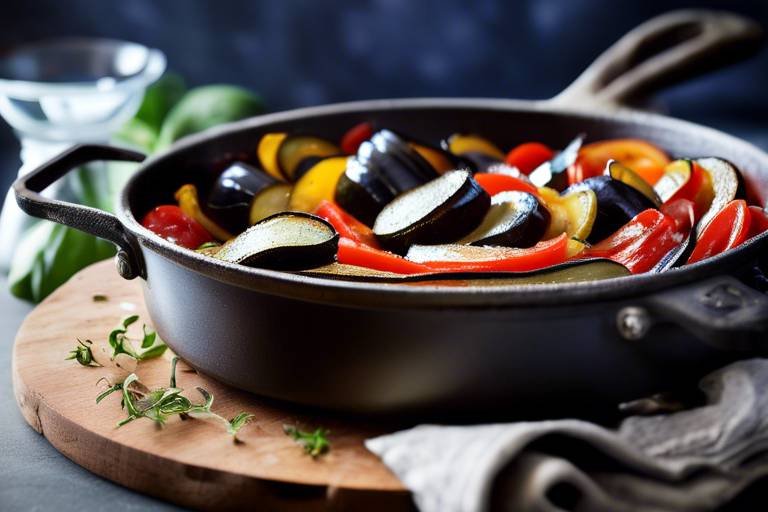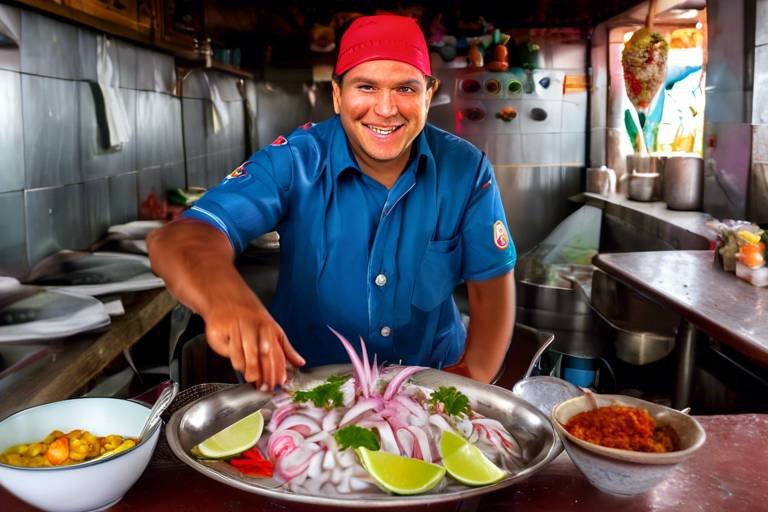The Ultimate Guide to South Korean Kimchi
South Korean kimchi is not just a dish; it's a cultural icon that has been a staple in Korean cuisine for centuries. This fermented delicacy has a rich history, diverse varieties, and numerous health benefits that have contributed to its global popularity. Let's delve into the world of South Korean kimchi and uncover the secrets behind this beloved dish.

History of Kimchi
The history of kimchi dates back thousands of years, originating in ancient Korea. Initially, kimchi was made by fermenting vegetables in brine to preserve them during the harsh winter months. Over time, this preservation method evolved, incorporating various seasonings like garlic, ginger, and red pepper flakes, giving rise to the flavorful dish we know today.
Kimchi holds immense cultural significance in South Korea, symbolizing the country's resilience and resourcefulness. It has become a staple in Korean cuisine, served at virtually every meal, from breakfast to dinner. The dish is deeply ingrained in Korean identity, reflecting the nation's history, traditions, and agricultural practices.
Throughout centuries, kimchi has undergone numerous transformations, with regional variations and family recipes contributing to its diverse range of flavors. Each household may have its unique kimchi recipe, passed down through generations, adding a personal touch to this beloved dish.
As South Korea modernized, kimchi production became more standardized, leading to commercial mass production and global distribution. Despite these changes, the essence of kimchi remains deeply rooted in Korean culture, connecting people to their heritage and shared culinary traditions.
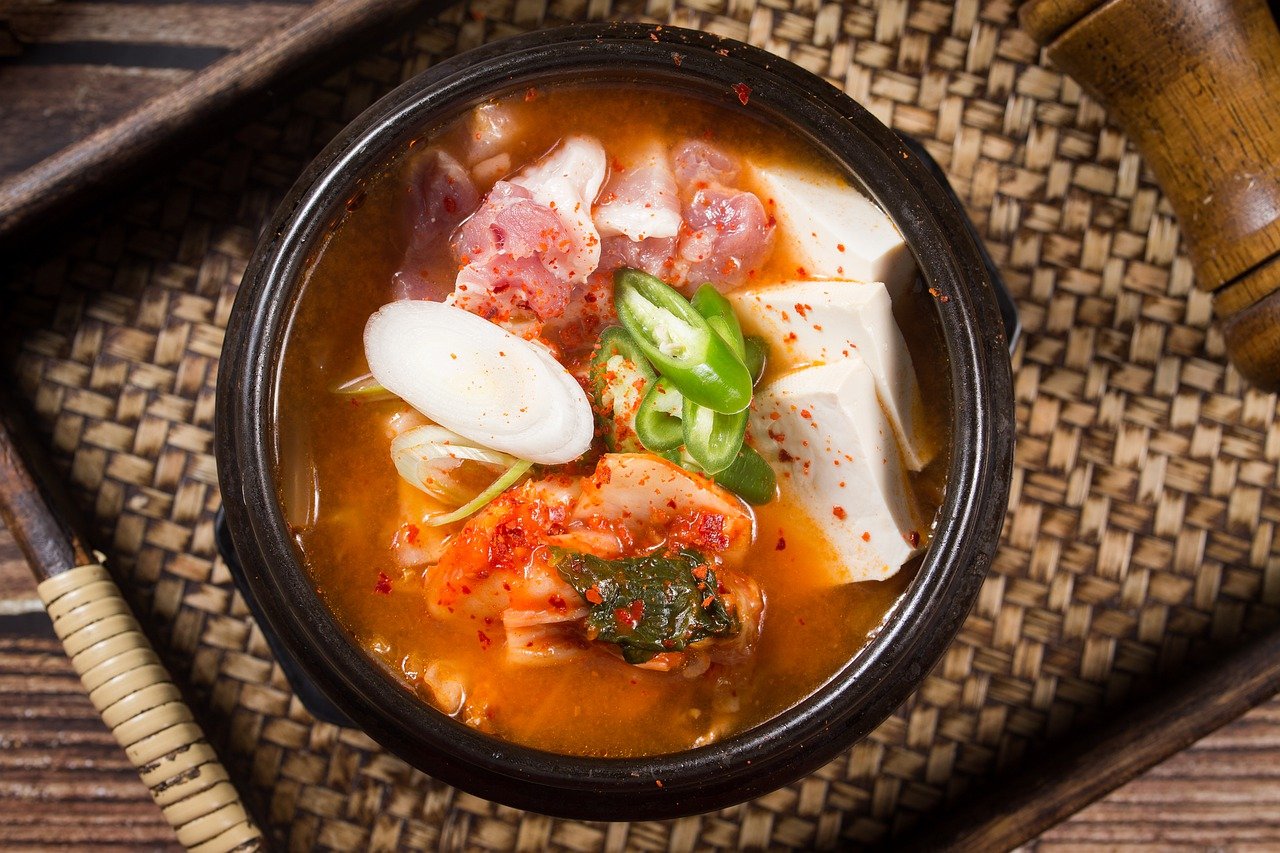
Types of Kimchi
When it comes to kimchi, the variety is truly astounding. South Korea boasts a rich array of kimchi types, each unique in flavor and preparation method. One of the most popular variations is the traditional napa cabbage kimchi, known for its spicy and tangy taste. This classic kimchi is made by fermenting cabbage with a blend of garlic, ginger, red pepper flakes, and fish sauce, resulting in a vibrant and flavorful dish.
Another beloved type of kimchi is radish kimchi, which offers a refreshing crunch and slightly sweeter taste compared to cabbage kimchi. Radish kimchi is typically made with Korean radishes, also known as mu, and seasoned with similar spices as cabbage kimchi. The combination of radish's crisp texture and the spicy kick of kimchi seasoning makes it a popular choice among kimchi enthusiasts.
For those looking for a milder and more delicate kimchi option, cucumber kimchi is a delightful alternative. Cucumber kimchi is made by marinating cucumber slices in a mixture of garlic, ginger, and chili powder, resulting in a light and refreshing kimchi variety. The crispness of the cucumber combined with the tangy and savory flavors of the seasoning creates a harmonious balance that is perfect for summer.
Each type of kimchi offers a unique sensory experience, from the fiery heat of traditional cabbage kimchi to the cool crunch of radish kimchi and the refreshing taste of cucumber kimchi. Whether you prefer your kimchi bold and spicy or subtle and crisp, there is a kimchi variety to suit every palate.
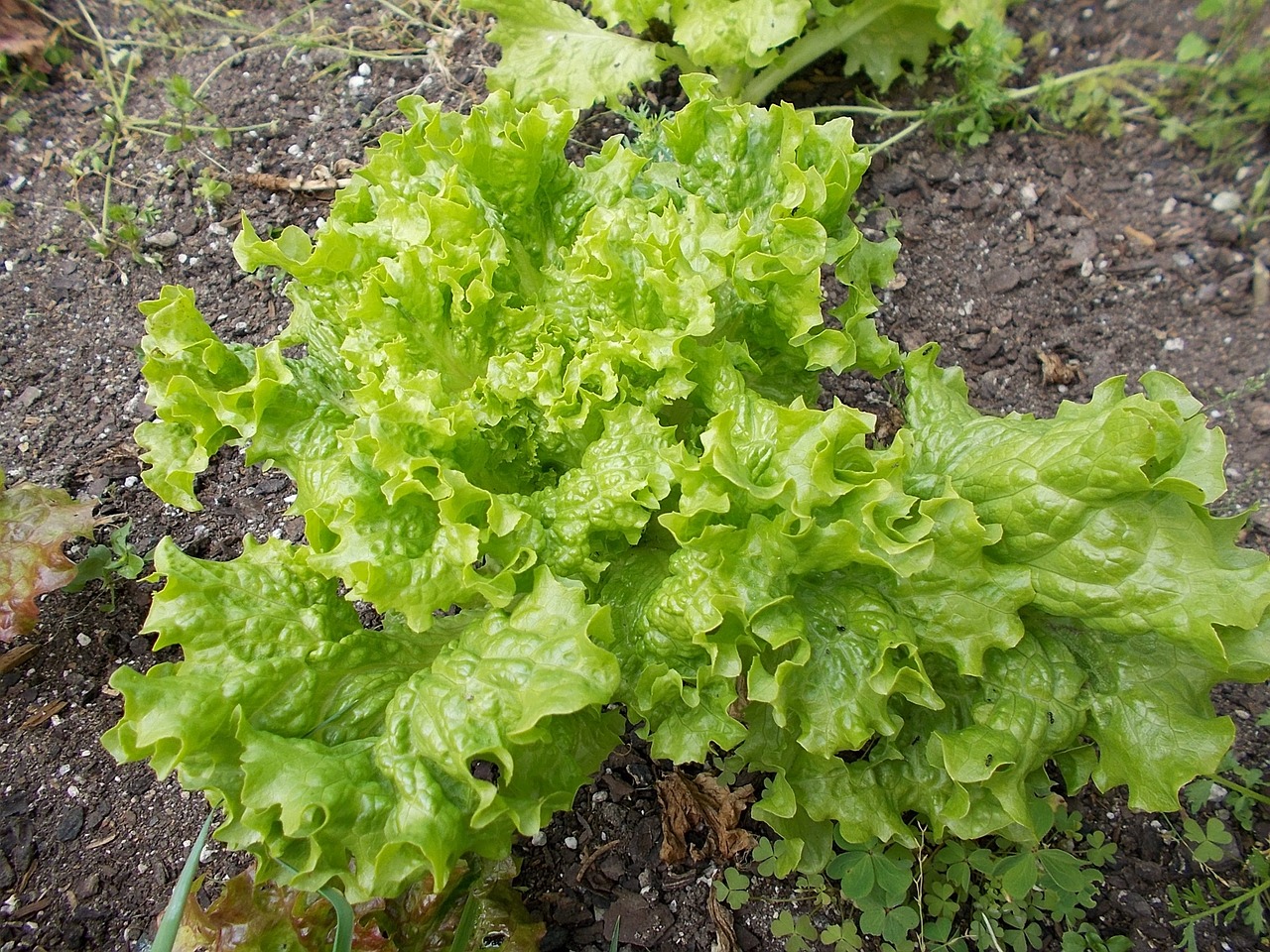
Health Benefits
When it comes to , kimchi is a true powerhouse of nutrition. This iconic Korean dish is not only delicious but also packed with probiotics that are beneficial for gut health. The fermentation process of kimchi creates a rich source of healthy bacteria that can promote a balanced gut microbiome, leading to improved digestion and overall well-being.
Moreover, kimchi is known for its potential anti-inflammatory properties, thanks to ingredients like garlic, ginger, and chili peppers. These components contain antioxidants and phytochemicals that may help reduce inflammation in the body, supporting a healthy immune system and potentially lowering the risk of chronic diseases.
Studies have also suggested that regularly consuming kimchi may have cardiovascular benefits due to its ability to lower cholesterol levels. The presence of fiber-rich vegetables in kimchi can aid in maintaining heart health and reducing the risk of heart-related conditions.
Furthermore, kimchi is a low-calorie food that is high in essential nutrients such as vitamins A, B, and C, as well as minerals like calcium, iron, and selenium. This combination of nutrients makes kimchi a valuable addition to a balanced diet, providing a range of health benefits beyond just its delicious taste.
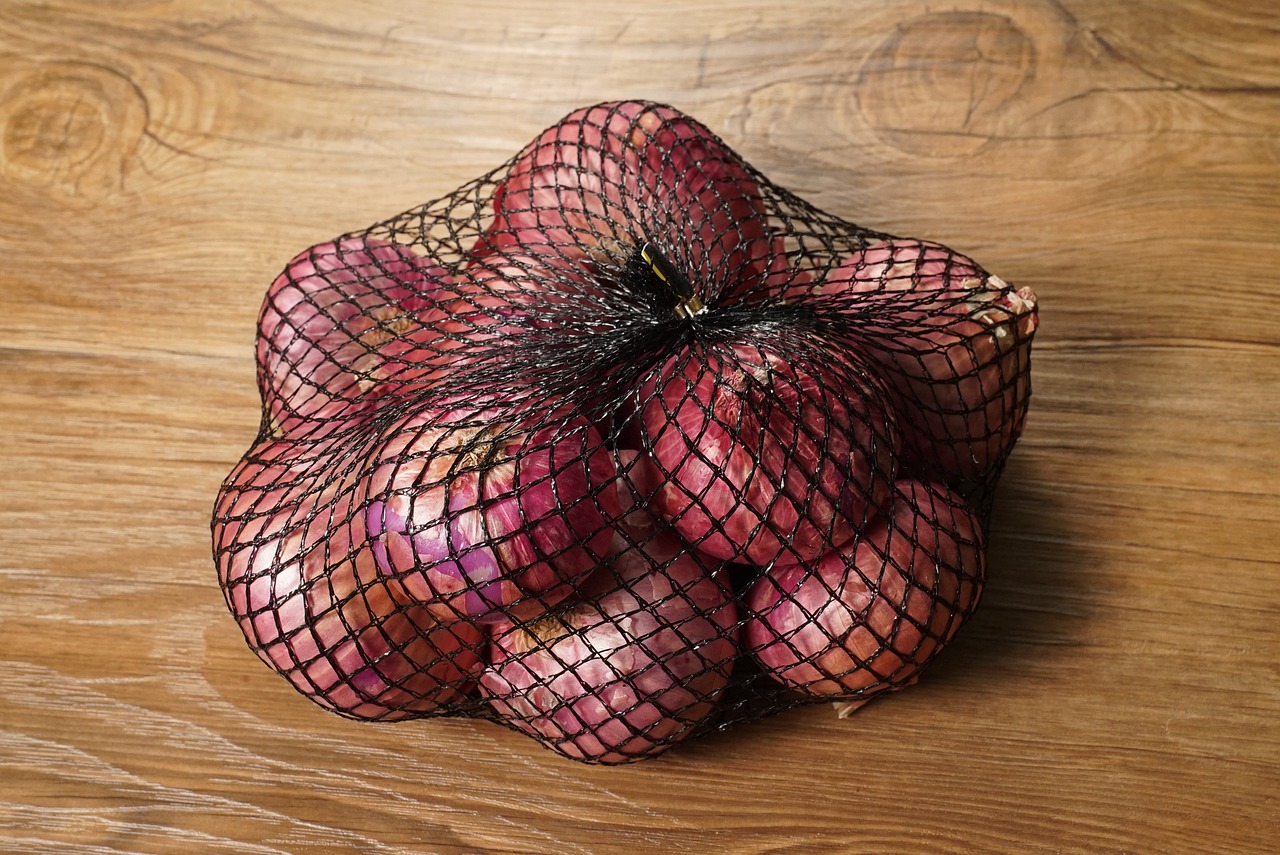
Kimchi-Making Process
Are you ready to embark on the flavorful journey of making your own authentic kimchi at home? The kimchi-making process is a fascinating blend of tradition, flavor, and fermentation techniques that have been passed down through generations in South Korea.
First and foremost, you will need to gather the essential ingredients for your kimchi creation. This includes napa cabbage, Korean radish, garlic, ginger, Korean red chili pepper flakes (gochugaru), fish sauce, salt, and sugar. Each ingredient plays a crucial role in achieving that perfect balance of spicy, tangy, and umami flavors that kimchi is known for.
Once you have all your ingredients ready, it's time to start the preparation process. The napa cabbage is typically cut into quarters, salted, and left to sit for a few hours to draw out excess moisture. This step is essential for creating the right texture and flavor profile in your kimchi.
After the cabbage has been salted and rinsed, it's time to create the kimchi paste. This flavorful mixture is made by blending garlic, ginger, gochugaru, fish sauce, and sugar into a thick, spicy paste. The paste is then gently massaged onto each cabbage leaf, ensuring that every inch is coated with the delicious mixture.
Once the cabbage has been fully coated with the kimchi paste, it's time to pack the kimchi into a clean, airtight container. The fermentation process is crucial for developing the complex flavors of kimchi, so be sure to let it sit at room temperature for a few days to allow the flavors to meld and mature.
During the fermentation process, be sure to check on your kimchi regularly and press down on the cabbage to release any air bubbles that may have formed. This helps ensure that the kimchi ferments evenly and develops that signature tangy flavor that kimchi is known for.
After a few days of fermentation, your homemade kimchi will be ready to enjoy! Whether eaten on its own as a side dish, mixed into fried rice, or used as a flavor-packed topping for various dishes, your homemade kimchi is sure to impress with its bold flavors and probiotic-rich goodness.
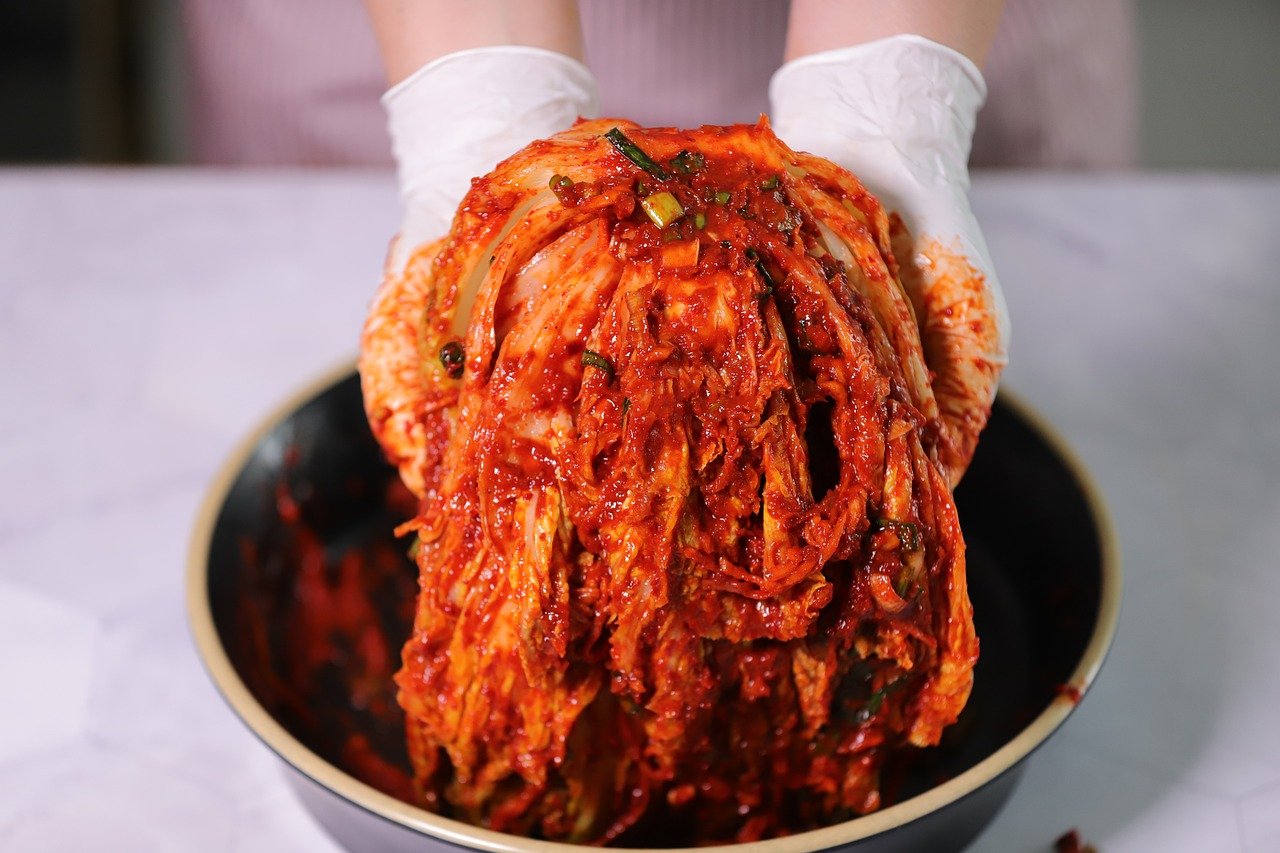
Kimchi in Korean Cuisine
In Korean cuisine, kimchi holds a revered status, acting as a versatile and essential ingredient in a myriad of dishes. Its unique blend of flavors, ranging from spicy and tangy to savory and umami, adds depth and complexity to traditional Korean fare. From kimchi fried rice to kimchi stew and kimchi pancakes, this fermented delicacy is a cornerstone of Korean culinary heritage.
Imagine a sizzling hot plate of kimchi fried rice, where the tangy notes of fermented cabbage intermingle with savory rice and bits of meat or vegetables, creating a harmonious symphony of flavors. The spicy kick of kimchi adds a zesty punch to the dish, elevating it to a whole new level of deliciousness.
Similarly, in kimchi stew, known as kimchi jjigae, the bold flavors of kimchi shine through in a rich and hearty broth, accompanied by tofu, pork, or seafood. This comforting stew warms both the body and soul, making it a popular choice, especially during chilly winter days.
For those craving a crispy and savory treat, kimchi pancakes, or kimchijeon, offer a delightful crunch with every bite. The combination of kimchi, flour, and various seasonings fried to perfection results in a mouthwatering dish that pairs perfectly with a dipping sauce or a hot bowl of soup.
Whether used as a side dish, a main course, or a flavor enhancer, kimchi's versatility in Korean cuisine knows no bounds. Its ability to add a burst of flavor and a touch of tradition to any dish makes it a beloved staple in Korean households and restaurants alike.

Kimjang Tradition
The holds a special place in South Korean culture, symbolizing unity, cooperation, and preparation for the winter months. Kimjang refers to the traditional practice of making large quantities of kimchi in late autumn to ensure an ample supply for the cold season ahead. This communal activity brings together families, friends, and neighbors to collectively prepare and preserve this iconic dish.
During Kimjang, communities gather to chop, season, and ferment vast amounts of vegetables, primarily napa cabbage, to create kimchi. The process is not only about food preparation but also about bonding and sharing cultural heritage. It fosters a sense of togetherness as people work side by side, sharing stories and laughter while preserving a culinary tradition that dates back centuries.
The Kimjang tradition goes beyond simple food preservation; it embodies the spirit of generosity and cooperation within Korean society. It reflects the importance of community support and the value of coming together to ensure everyone has enough food to sustain them through the harsh winter months. This practice highlights the interconnectedness of individuals and the significance of sharing resources for the common good.
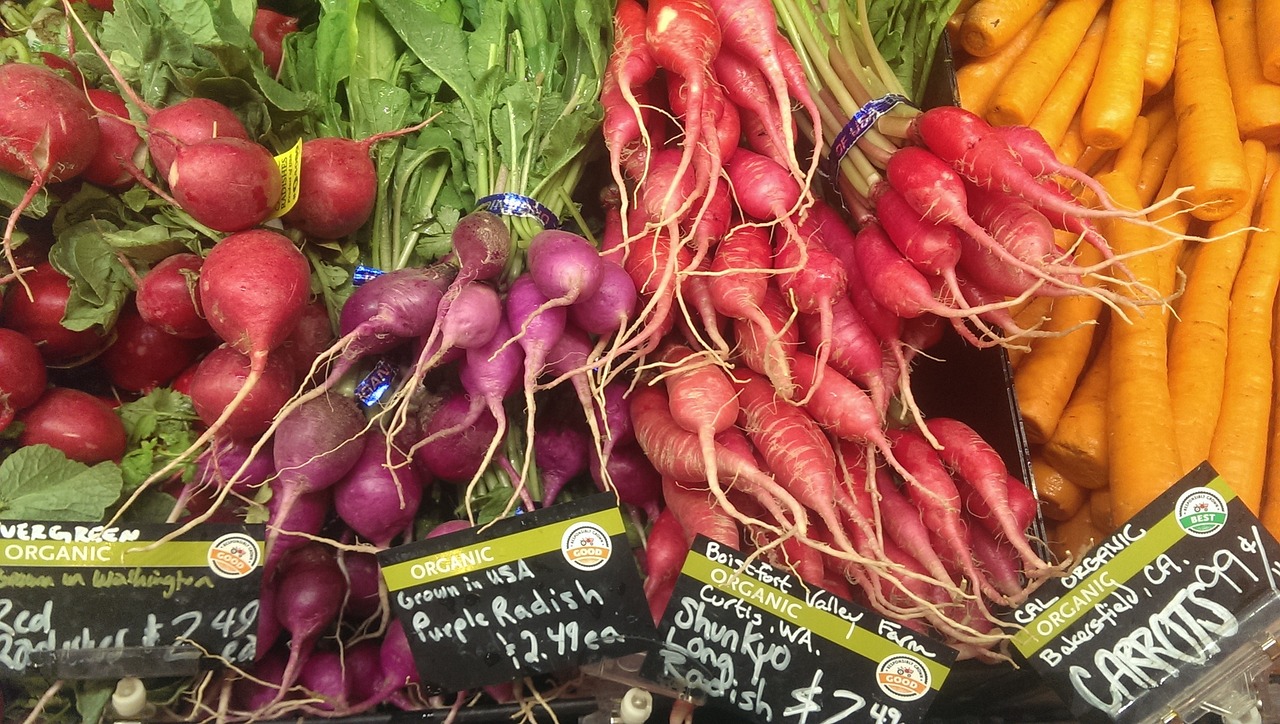
Kimchi Around the World
Kimchi, South Korea's beloved fermented dish, has transcended its cultural roots and made a significant impact around the world. This spicy and tangy condiment has gained popularity not only in Asian countries but also in Western societies, where its unique flavor profile has captured the taste buds of many.
One of the reasons for kimchi's global appeal is its versatility in culinary applications. While traditionally enjoyed as a side dish in Korean cuisine, kimchi has found its way into various international dishes, adding a punch of flavor and a hint of fermentation.
Restaurants worldwide have incorporated kimchi into their menus, offering innovative creations such as kimchi burgers, kimchi tacos, and kimchi pizza. The fusion of kimchi with different cuisines has created a new wave of culinary experiences, blending traditional Korean flavors with local tastes.
Furthermore, the rise of health-conscious consumers has contributed to the popularity of kimchi outside of Korea. With its probiotic properties and potential health benefits for gut health and immunity, kimchi has become a sought-after superfood in many health-conscious communities.
As a result, you can now find kimchi in supermarkets, specialty stores, and even online platforms, making it accessible to individuals worldwide who want to experience the unique taste and health benefits of this iconic Korean dish.
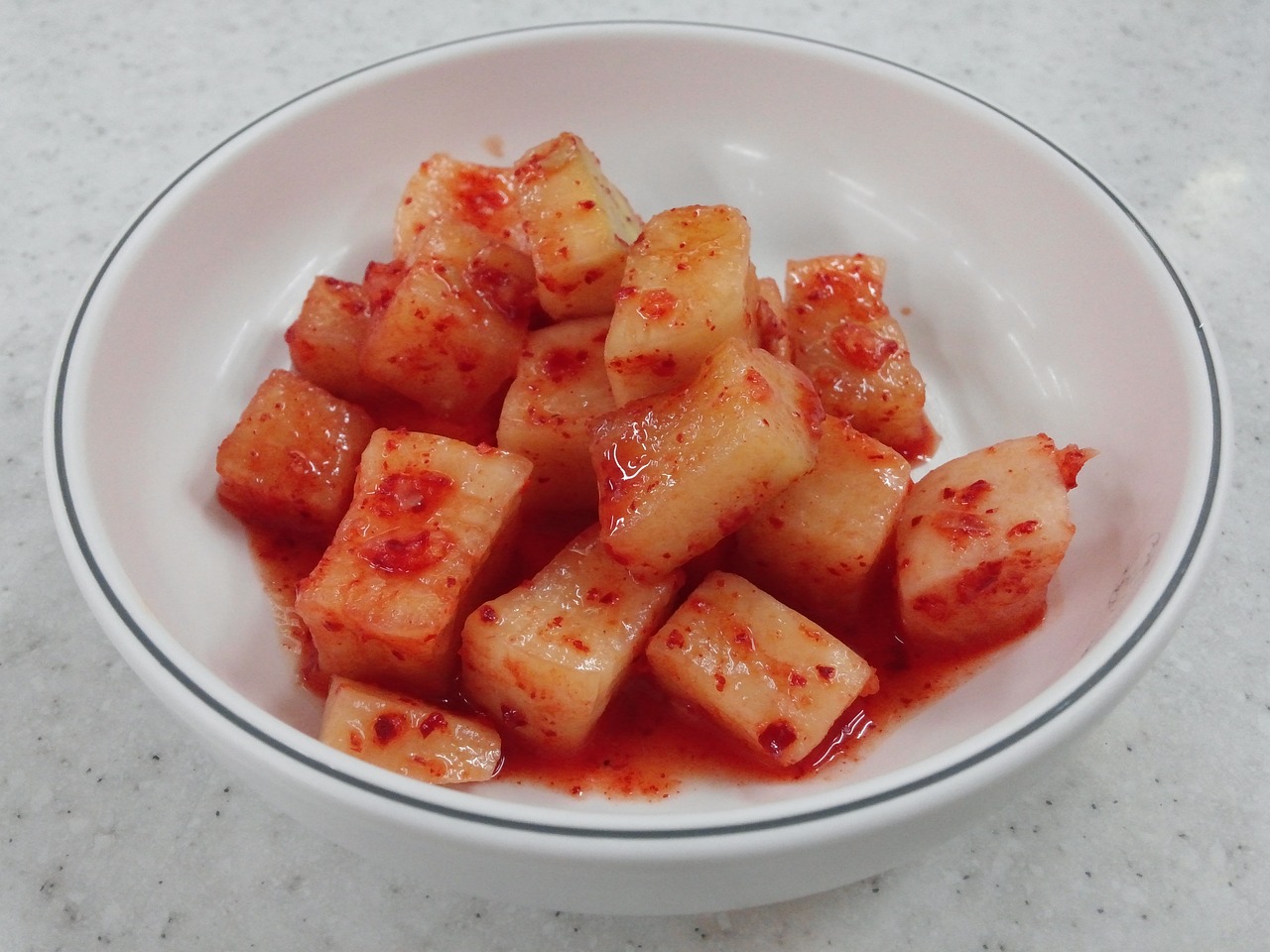
Kimchi Recipes
Kimchi is a versatile ingredient that can elevate various dishes with its unique flavor profile. One popular way to enjoy kimchi is by incorporating it into creative recipes that offer a fusion of flavors. From spicy kimchi tacos to savory kimchi grilled cheese sandwiches, the possibilities are endless when it comes to using kimchi in your cooking.
For a modern twist on a classic favorite, try making kimchi tacos by combining crispy fried tofu or marinated beef with kimchi, fresh vegetables, and a drizzle of creamy sriracha mayo. The combination of the tangy kimchi and the spicy mayo creates a harmonious balance of flavors that will leave your taste buds tingling.
If you're in the mood for a comforting and indulgent treat, whip up a batch of kimchi grilled cheese sandwiches. Layer slices of sharp cheddar cheese, kimchi, and caramelized onions between two slices of crusty bread, then grill until golden brown and gooey. The melted cheese and the tangy kimchi meld together to create a mouthwatering sandwich that is perfect for a cozy night in.
For a satisfying and flavorful meal, consider making kimchi ramen by adding kimchi, soft-boiled eggs, scallions, and sliced pork belly to a steaming bowl of ramen noodles. The spicy and tangy kimchi infuses the broth with a depth of flavor that will warm you from the inside out, making it the ultimate comfort food for any occasion.
These kimchi recipes showcase the versatility of this beloved Korean ingredient and demonstrate how it can be used to add a unique twist to traditional dishes. Whether you're a kimchi enthusiast or new to the world of fermented foods, these recipes are sure to impress your taste buds and leave you craving more.
Frequently Asked Questions
- What is kimchi?
Kimchi is a traditional Korean dish made of fermented vegetables, typically cabbage and radishes, mixed with seasonings like chili pepper, garlic, ginger, and fish sauce. It is a staple in Korean cuisine and known for its spicy and tangy flavors.
- Is kimchi healthy?
Yes, kimchi is considered a healthy food due to its probiotic content, which is beneficial for gut health. It also contains vitamins, minerals, and antioxidants that can boost the immune system and potentially have anti-inflammatory properties.
- How long does kimchi last?
Properly fermented kimchi can last for several months when stored in the refrigerator. The flavor may continue to develop over time, becoming more tangy and complex. It is important to seal the kimchi container well to prevent air exposure and maintain freshness.
- Can I make kimchi at home?
Absolutely! Making kimchi at home is a rewarding experience. You can follow a simple recipe using ingredients like cabbage, radish, salt, chili flakes, garlic, and ginger. The fermentation process may take a few days to a week, depending on your preference for the level of fermentation.
- What are the different types of kimchi?
There are numerous varieties of kimchi, with the most common being napa cabbage kimchi, radish kimchi, cucumber kimchi, and water kimchi. Each type has its unique flavors and textures, offering a diverse range of options to enjoy.












